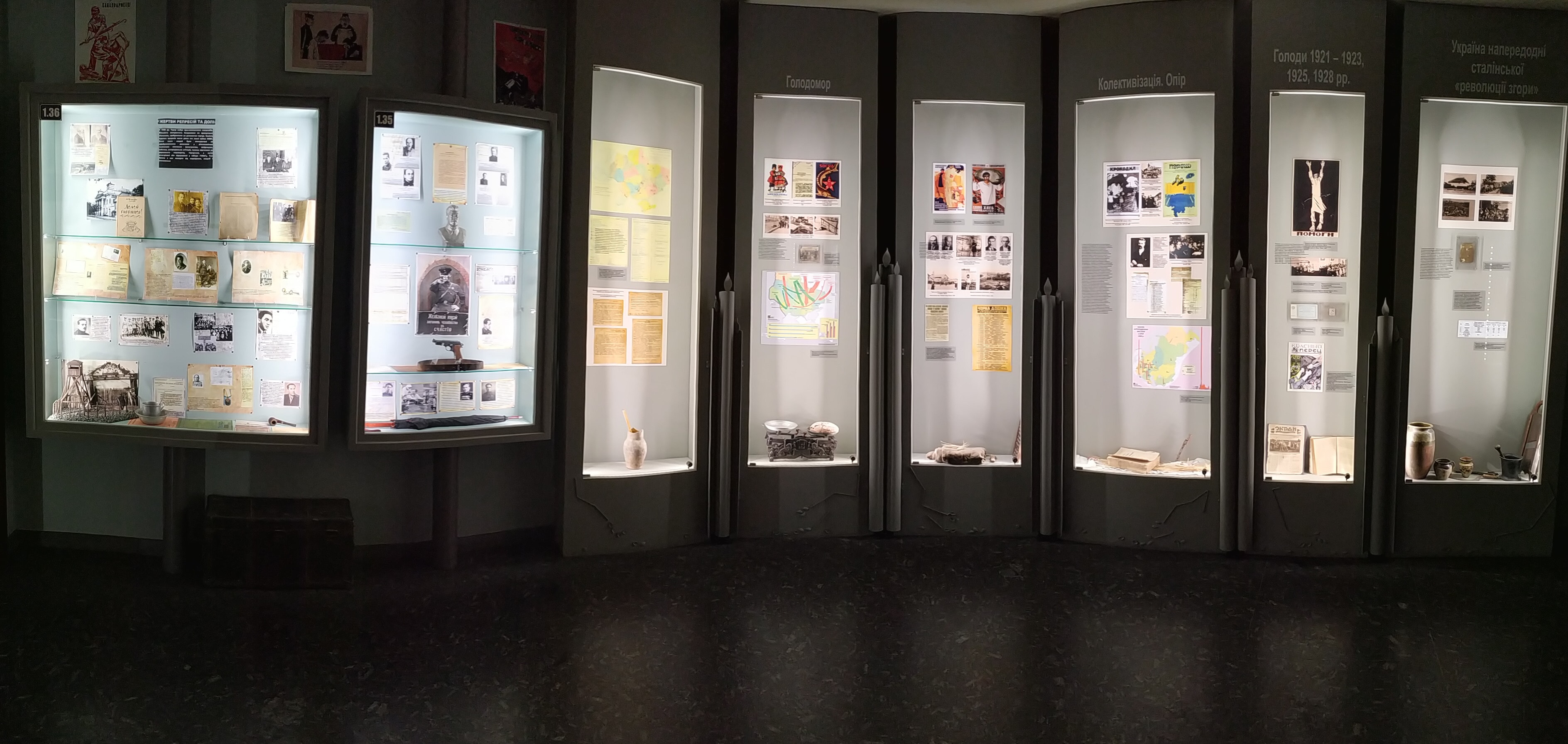The Holodomor of 1932-1933 is the first genocide on Ukrainian lands in the tragic 20th century. According to various estimates, from 4 to 7 million residents of Ukrainian villages and cities became its victims. On the one hand, the memory of the Soviet totalitarian state crime was carefully concealed and distorted by the communist regime, and, on the other hand, it continued to dominate as often an unconscious trauma over all residents of Ukraine - and those who were directly affected by the Holodomor and their descendants.
The Museum "Jewish Memory and Holocaust in Ukraine" concept provided for the consideration the Holocaust, the main Museum theme, in the context of other genocides. Therefore, in our Museum, the theme of the Holodomor history was developed as an integral part of the common memory of all Ukrainians, regardless of their ethnic or religious affiliation. A group of specialists from both the Museum researchers (Dr. Igor Shchupak, Valentyn Rybalka, Dilfuza Hlushchenko) and scientific consultants - leading Holodomor history researchers both from Ukraine (prof. Liudmyla Hrynevych, Ukrainian Holodomor Research and Education Centre) and from abroad (Valentyna Kuryliv, Holodomor Research and Education Consortium, Canada) worked on the corresponding thematic block. Exposition "The Famine in Soviet Ukraine. The Holodomor of 1932-1933", opened to visitors in September 2016, was the result of many years of work. It is designed to answer to a number of important questions:
what was the Ukrainian village before the beginning of Soviet social experiments?
What was the fundamental difference between other famines (1921-1923, the little-known general famines of 1924-1925, 1928-1929, and the famine of 1946-1947) and the genocide of 1932-1933?
What was the historical context in which the tragedy of Ukrainian peasantry unfolded, the end result of which was the Holodomor of 1932-1933?
What were the consequences of the Holodomor for the life of rural national areas (Albanian, Bulgarian, Jewish, German) and others?
Thousands of people visit the exposition every month. This year, every educational institution, as well as everyone interested, had the opportunity to attract its schoolchildren and students to free museum-themed lectures dedicated to the Holodomor tragedy. During 1,5 months, the museum was visited by more than 500 people from 14 educational institutions, units of the Armed Forces of Ukraine and the National Guard of Ukraine, as well as individual groups.
Museum "Jewish Memory and Holocaust in Ukraine" and "Tkuma" Ukrainian Institute for Holocaust Studies are not only scientific and educational centers, but also provide opportunities for educational events aimed at the general public interested in the history of our country. In different years, the participants in the Dniprovsky Historical Club meetings were famous Holodomor of 1932-1933 and other famines researchers - Dr. Gennadi Poberezny (Harvard Ukrainian Research Institute), prof. Liudmyla Hrynevych, prof. Oleksandr Nikiliev (Oles Honchar Dnipro National University), prof. Nataliia Romanets (Kryvyi Rih State Pedagogical University) and others.
We invite you to visit this and others expositions of our Museum, as well as watch a video of the most interesting events that took place in the Museum on the “Tkuma” Ukrainian Institute for Holocaust Studies’ official YouTube channel.

